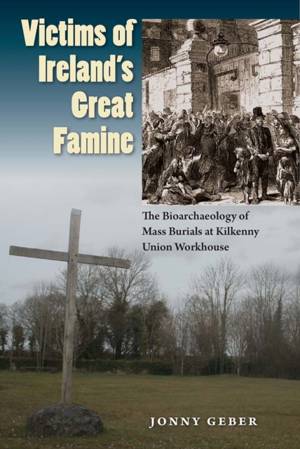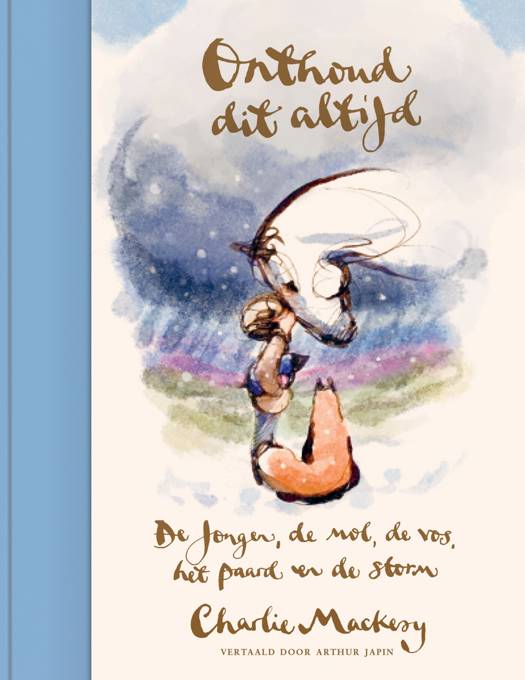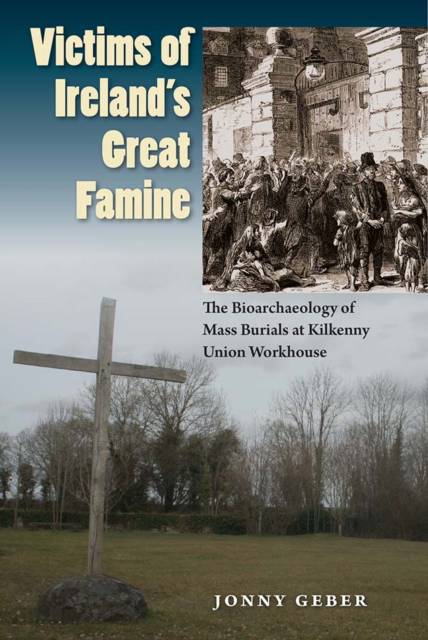
Bedankt voor het vertrouwen het afgelopen jaar! Om jou te bedanken bieden we GRATIS verzending (in België) aan op alles gedurende de hele maand januari.
- Afhalen na 1 uur in een winkel met voorraad
- In januari gratis thuislevering in België
- Ruim aanbod met 7 miljoen producten
Bedankt voor het vertrouwen het afgelopen jaar! Om jou te bedanken bieden we GRATIS verzending (in België) aan op alles gedurende de hele maand januari.
- Afhalen na 1 uur in een winkel met voorraad
- In januari gratis thuislevering in België
- Ruim aanbod met 7 miljoen producten
Zoeken
Victims of Ireland's Great Famine
The Bioarchaeology of Mass Burials at Kilkenny Union Workhouse
Jonny Geber
€ 129,95
+ 259 punten
Uitvoering
Omschrijving
"Sets Irish archaeology on an exciting new course by tangibly proving the harshness of the famine and the workhouse system."--Charles E. Orser Jr., author of The Archaeology of Race and Racialization in Historic America "Sheds critical new light on the actualities of daily life in Famine-era Ireland, challenges some of the myths about the horrors of the workhouse experience, and restores humanity to the nameless dead."--Audrey Horning, author of Ireland in the Virginian Sea: Colonialism in the British Atlantic
With one million dead, and just as many forced to emigrate, the Irish Famine (1845-52) is among the worst health calamities in history. Because historical records of the Victorian period in Ireland were generally written by the middle and upper classes, relatively little has been known about those who suffered the most, the poor and destitute. But in 2006, archaeologists excavated an until then completely unknown intramural mass burial containing the remains of nearly 1,000 Kilkenny Union Workhouse inmates. In the first bioarchaeological study of Great Famine victims, Jonny Geber uses skeletal analysis to tell the story of how and why the Famine decimated the lowest levels of nineteenth century Irish society. Seeking help at the workhouse was an act of desperation by people who were severely malnourished and physically exhausted. Overcrowded, it turned into a hotspot of infectious disease--as did many other union workhouses in Ireland during the Famine. Geber reveals how medical officers struggled to keep people alive, as evidenced by cases of amputations but also craniotomies. Still, mortality rates increased and the city cemeteries filled up, until there was eventually no choice but to resort to intramural burials. Deceased inmates were buried in shrouds and coffins--an attempt by the Board of Guardians of the workhouse to maintain a degree of dignity towards these victims. By examining the physical conditions of the inmates that might have contributed to their institutionalization, as well as to the resulting health consequences, Geber sheds new and unprecedented light on Ireland's Great Hunger.
With one million dead, and just as many forced to emigrate, the Irish Famine (1845-52) is among the worst health calamities in history. Because historical records of the Victorian period in Ireland were generally written by the middle and upper classes, relatively little has been known about those who suffered the most, the poor and destitute. But in 2006, archaeologists excavated an until then completely unknown intramural mass burial containing the remains of nearly 1,000 Kilkenny Union Workhouse inmates. In the first bioarchaeological study of Great Famine victims, Jonny Geber uses skeletal analysis to tell the story of how and why the Famine decimated the lowest levels of nineteenth century Irish society. Seeking help at the workhouse was an act of desperation by people who were severely malnourished and physically exhausted. Overcrowded, it turned into a hotspot of infectious disease--as did many other union workhouses in Ireland during the Famine. Geber reveals how medical officers struggled to keep people alive, as evidenced by cases of amputations but also craniotomies. Still, mortality rates increased and the city cemeteries filled up, until there was eventually no choice but to resort to intramural burials. Deceased inmates were buried in shrouds and coffins--an attempt by the Board of Guardians of the workhouse to maintain a degree of dignity towards these victims. By examining the physical conditions of the inmates that might have contributed to their institutionalization, as well as to the resulting health consequences, Geber sheds new and unprecedented light on Ireland's Great Hunger.
Specificaties
Betrokkenen
- Auteur(s):
- Uitgeverij:
Inhoud
- Aantal bladzijden:
- 312
- Taal:
- Engels
- Reeks:
Eigenschappen
- Productcode (EAN):
- 9780813061177
- Verschijningsdatum:
- 17/11/2015
- Uitvoering:
- Hardcover
- Formaat:
- Genaaid
- Afmetingen:
- 152 mm x 229 mm
- Gewicht:
- 625 g

Alleen bij Standaard Boekhandel
+ 259 punten op je klantenkaart van Standaard Boekhandel
Beoordelingen
We publiceren alleen reviews die voldoen aan de voorwaarden voor reviews. Bekijk onze voorwaarden voor reviews.









